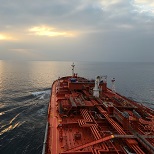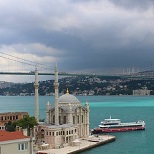Changing shape of eastern Europe
The political upheaval of recent months in Ukraine as resulted in the separation of the Crimea.
Arthur Nitsevych, of Kiev-based Interlegal, reviews what is happening to the ports and the shipping industry.
Ukraine is situated between the European Union (EU) and Russia. On the one hand, Ukraine has land borders with the EU member states of Poland, Hungary, Slovakia and Romania. And, on the other, it has border crossings with developing Eastern European economies, namely Russia, Belarus and Moldova.
Obviously, events around the political conflict in the Crimean peninsula will influence and even now are influencing the shipping business and commodity business in the Black Sea region. From the legal point view, at a first glance this relates to the parties of charter parties – shipowners and charterers. Port, logistics and shipping are very conservative. No serious problems have been faced up to the date just because port terminals have been handling cargos that were delivered to ports long ago.
Ports
According to operational data of the Ukrainian Sea ports Administration, from the beginning of 2014, Ukrainian seaports have handled a little under 23m tons of cargo, which corresponds to the level of cargo handling volumes in early 2013. In 2013 Ukrainian ports processed 148m tons in total. The main cargos are grain (20%), ore (18%), steel (15%), coal (10%), mineral oils (8%), fertilisers (5%), containers (5%) and others (18%).
Numbers are not exact but show the rough proportions.
The port infrastructure of Ukraine consists of 18 sea commercial ports situated in the Black Sea and Sea of Azov. Five of them are situated in the Crimean peninsula and in 2013 the statistics show they handled:
• Sevastopol – about 4.8mn ton,
• Kerch – about 2.8m ton,
• Feodosiya – about 2.6m ton,
• Yevpatoriya – about 0.97m ton,
• Yalta – about 0.16m ton.
Total: a higher than 113m ton.
One can see that Crimean ports did not play the first violin in Ukraine although, of course, were very important for the industry. Interestingly to note that two Ukrainian ports in the Sea of Azov, Mariupol and Berdyansk, may face certain difficulties because Russia is going to take control of the Kerch Strait.
Kerch Strait is a known place for transshipment and ship to ship operations. On 17 March, P&I club Skuld issued guidance on cargo operations at anchorage in the Ukraine. It is said many Skuld members have regular ports of call in Ukraine. And during recent years, a large number of cargo operations have been carried out while vessels are at anchorages in Ukraine.
In February 2014 Ukraine exported more than 2.3m tonnes of grains and pulses, which became the record for the month period. Previously, only back in 2008/09 had Ukraine matched the maximum volumes of the February export shipments of grains, when it had exported 2.1m tonnes. Maize formed the major share in the structure of grain exports - 85%, or almost 2m tonnes. Wheat formed nearly 12% of the general grain exports,
at more than 287,000 tonnes. As for the shipment structure by the ports, in February 2014, the terminals of the Odessa port zone supplied nearly 58.5% of the grain export volumes for foreign markets, the terminals of Nikolayev region 32.2%, and the terminals of Sevastopol 3.6%.
Despite all concerns, at the moment Ukrainian ports and shipping operations mostly continue as normal. Cargo movements have not yet been affected by the escalation. According to GAC Shipping agency, only on 6 March operations were suspended in Kerch but due to foggy weather. Political developments have had no impact on merchant shipping or operations at all in the country’s commercial ports.
The mass media reported the state council of the Crimea nationalised the integral property complexes of enterprises being previously under the control of the Ministry of Infrastructure of Ukraine and the Ministry of Agrarian Policy and Food of Ukraine, located on the peninsula. The decision was accepted on 17 March.
There are the following objects in the list:
• Kerch ferry terminal
• Kerch commercial seaport
• Kerch fishery seaport
• Feodosia commercial seaport
• Yalta commercial seaport
• Sevastopol commercial seaport
• Sevastopol fishery seaport
• Yevpatoria fishery seaport.
Crimea nationalised the property of the state enterprise “Administration of Maritime ports of Ukraine” and the state institution “Goshydrographya”. This at least means that control over pilotage in the Kerch Strait is also taken. The Crimean parliament also voted to nationalise the energy companies Ukrtransgaz and Chornomornaftohaz (according to a statement on the Parliament’s website).
Meanwhile the Ministry of Justice of Ukraine has declared the “nationalisation” by the Crimean government of Ukrainian state facilities in Crimea as illegal. Nationalisation is usually understood to mean the process of taking a private industry or private assets into public ownership by a national government or state. All of the above assets are not private. All of them belonged to the state of Ukraine.
Shipping
The insurance industry refrains from calling Ukrainian waters a Listed War area with a greater risk of vessels being damaged or seized. The IG Joint War Committee met again on 7 March to consider the developments in Crimea. No changes were made but the area remains under close review.
Local P&I correspondents report most ports in Ukraine function as normal but foreign crew members are recommended to keep away from areas where any demonstrations are taking place and even to refrain from coming ashore.
Shipping people expect shipping costs for commodities from Ukraine would rather be raised. But now it is too soon to charge higher freight. Owners and shipping executives are worried, but everyone is waiting how the situation develops. So, everyone is keeping an eye on what is happening everyday in the country.
Legal questions relate to:
War risk clauses
Deviation:
- Bill of lading
- Frustration
- Force majeure.
Under the circumstances, the general advice is to include special clauses into charter parties. For example, as for war risk issues, an option with specified port within range of ports or substitute port may be recommended. Also, for instance, parties are recommended to consider a clause detailing the understanding what safe port is.
Further possible direct consequences connected with the regional logistics are:
1. Costs for deliveries of cargo to the Crimean peninsula are going to increase (including the railway costs, first of all). First, this is of extra risks. Secondly, the “new border” checkpoint at the bottleneck entrance of the Crimean peninsula is another subject to control.
2. The majority of cargo generated from Ukraine can be quite easily processed by the other 11 ports situated in Ukraine.
3. It is not clear how and when the international community is going to accept the “referendum” in Crimea and this territory is going to be rather isolated from international business and subject to different sanctions.
4. In the nearest future the sea carriage market in the Black Sea is going to increase with a season rise connected with the end of the winter period and more active continuing of commodities’ export.
5. The declared takeover of property situated in the Crimean peninsula is subject to a more detailed legal analysis and future legal battles in international court and arbitration institutions.
Obviously logistic chains now are being changed. Certainly, logistic executives are going to mitigate risks and would rather send new lots of cargo to other ports, not engaged into the political conflict, first of all, ports of Big Odessa. This concerns not only Crimean ports and other Ukrainian and Russian ports but also transit points in the Central Asia, Caucasus and Europe.
The situation is changing quickly.
.png) Interlegal Shipping digest Q1 20232023.04.24
Interlegal Shipping digest Q1 20232023.04.24Interlegal Shipping digest Q1 2023.pdf Court finds hold reinspection should have been arranged with reasonable diligence It is the...
.jpg)
Since the beginning of military aggression of the Russian Federation and hostilities at the territory of Ukraine, maritime industry, like al...
 Old Father Dnieper Waiting for His Ships2020.06.08
Old Father Dnieper Waiting for His Ships2020.06.08Speaking about the rivers, we can’t but remember that they cradled the first human civilisations long, long ago, that they served the main a...

Some major amendments on Turkish Port Regulation took place in the Official Gazette dated 24th September, 2019. By this article, Mehmet Dogu...
 Sanctions of Black Sea Region countries2019.02.28
Sanctions of Black Sea Region countries2019.02.28Sanctions of Ukraine Since 1995, shipping has been Interlegal principal activity. Our traditional clients are shipowners, managers, chart...

In 2016 nearly 47 thousand employees engaged in the Ukrainian sea port service market earned income equal to ca. 1,700 million USD (approxim...

According to the current regulations, since 2011 all vessels over 300 GT calling at Turkish ports or other facilities in Turkish waters, as...

On March 27, 2014 the UN General Assembly adopted a resolution 68/262, in which called upon all States, international organizations and spec...

Failure of the charterer to pay the freight or demurrage amount incurred at the port of loading is quite frequent situation in the carriage...
 Crimean Ports: Now and After2014.09.30
Crimean Ports: Now and After2014.09.30On March 27, 2014 the UN General Assembly adopted a resolution on Ukraine, which called upon States, international organizations and other i...




 Odessa, 65014, Ukraine, 1 а, Gretska St
Odessa, 65014, Ukraine, 1 а, Gretska St
